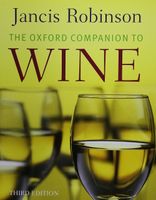Advertisement
Traditional method: Base wines
Published 2006
After the making of the base wines (described above), which usually takes place over the winter following the harvest, the final blend is made after extensive tasting, assessment, and assemblage. There is extreme flexibility in blending a non-dated wine and a high proportion of ‘reserve wine’ made in previous years may be used. Some champagne houses include up to 45% of reserve wines in their non-vintage blend. (krug indulge in the luxury of using base wines from up to ten different vintages being held in reserve.) The ingredients in a vintage-dated sparkling wine are more limited (often by necessity for those new to sparkling winemaking, and by law in Champagne). Many of the base wines made from dark-berried grapes, however lightly pressed, may have a light pink tinge at this stage, although the pigments are precipitated during tirage, the crucial next stage during which the blended wine rests on the lees of a second fermentation in bottle. As soon as the new blend has been made in bulk blending tanks, it usually undergoes cold stabilization in order to prevent subsequent formation of tartrates in bottle.


